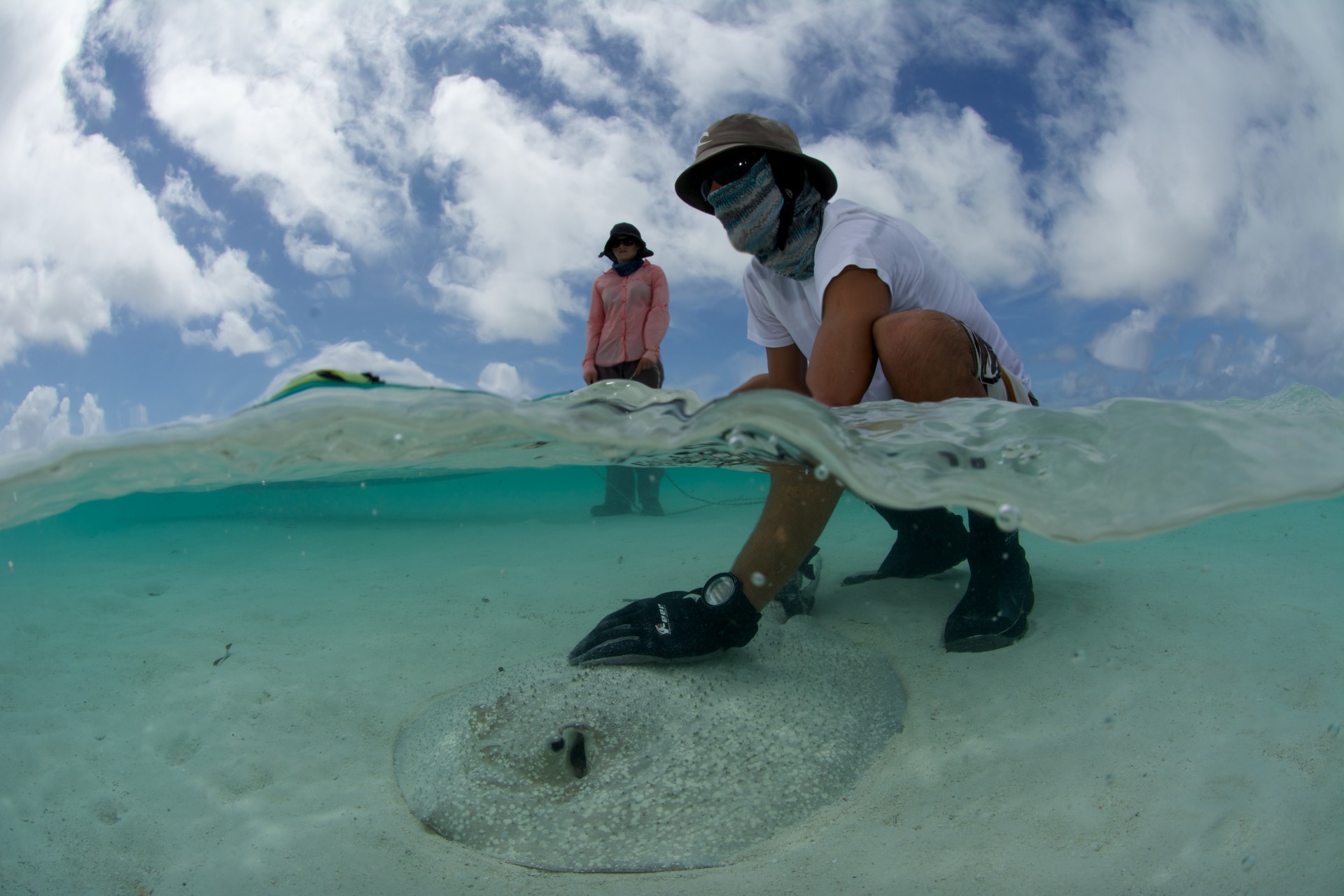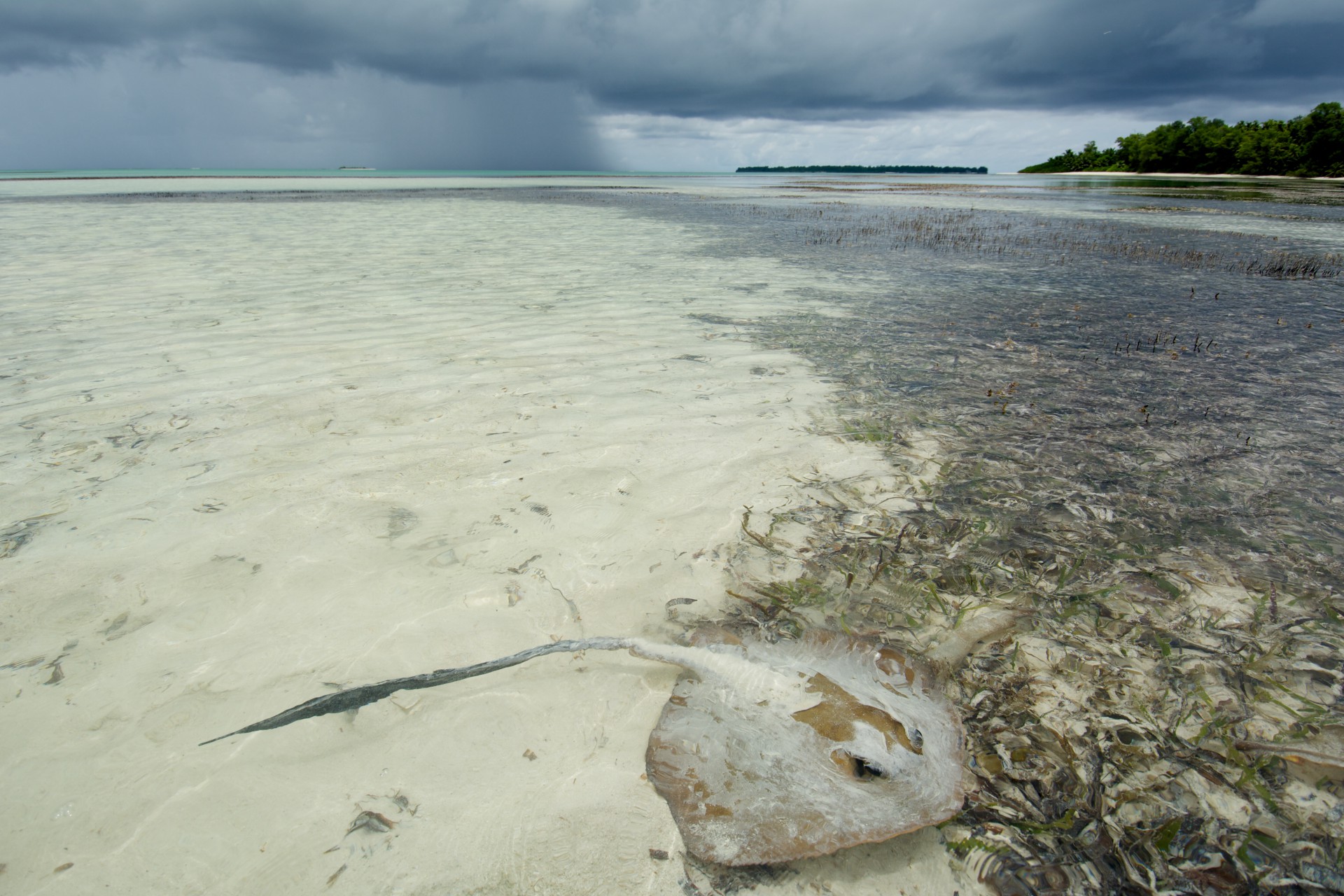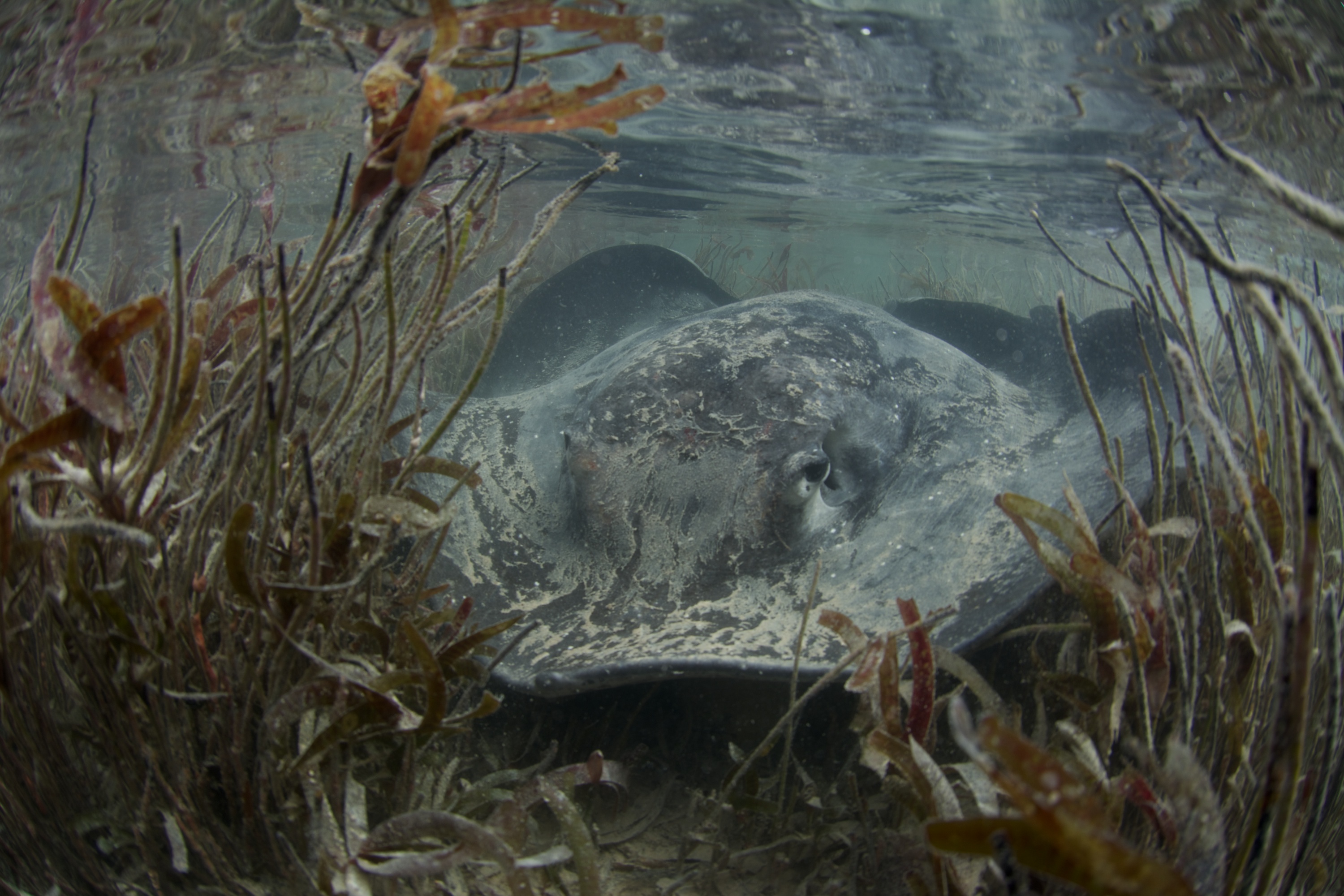Home is where the heart is…
…if you are a ray species living in a tropical atoll. Rays are the close relatives of sharks, just generally flappier. Three species of ray, all belonging to the same family (dasyatidae), are known to use the St Joseph atoll, adjacent to D’Arros island. These include the mangrove whipray, the porcupine ray and the feathertail ray.
Though we know that these animals use the site, until recently we didn’t know much more. Enter Chantel Elston, project leader and expert on all things flappy shark. A recently published study headed up by Chantel, has revealed much about the details of how these animals use the atoll and why.

Chris Boyes grips a large porcupine ray, while Chantel Elston watches. Photo by Rainer von Brandis | © Save Our Seas Foundation
The study used acoustic telemetry to monitor the movements of our three species of ray. Acoustic telemetry works with two components, a transmitter (makes a noise) and a receiver (listens for the noise). By implanting rays with transmitters and placing receivers strategically around the atoll, it is possible to listen to the rays and make a map of where they go and when. By doing this Chantel and her team have shown that all three species are highly resident to the atoll and that, generally, they used relatively restricted areas, not venturing too far from ‘home’.

A feathertail stingray moves through the shallow waters of St Joseph Atoll. Photo by Rainer von Brandis | © Save Our Seas Foundation
Other findings from the study show that young rays spend most of their time on shallow sand flats (probably to avoid predators) and adults spend most of their time in the deeper lagoon areas. There was no separation of habitats used between different ray species, with all species sharing space. How neighbourly.
Putting all of this together, this highlights the importance of St Joseph atoll to all three species and suggests that the site likely represents a nursery for these rays. Information like this helps to define the ways we protect marine areas, ensuring the future for these rays and the many other species that call the atoll home.


